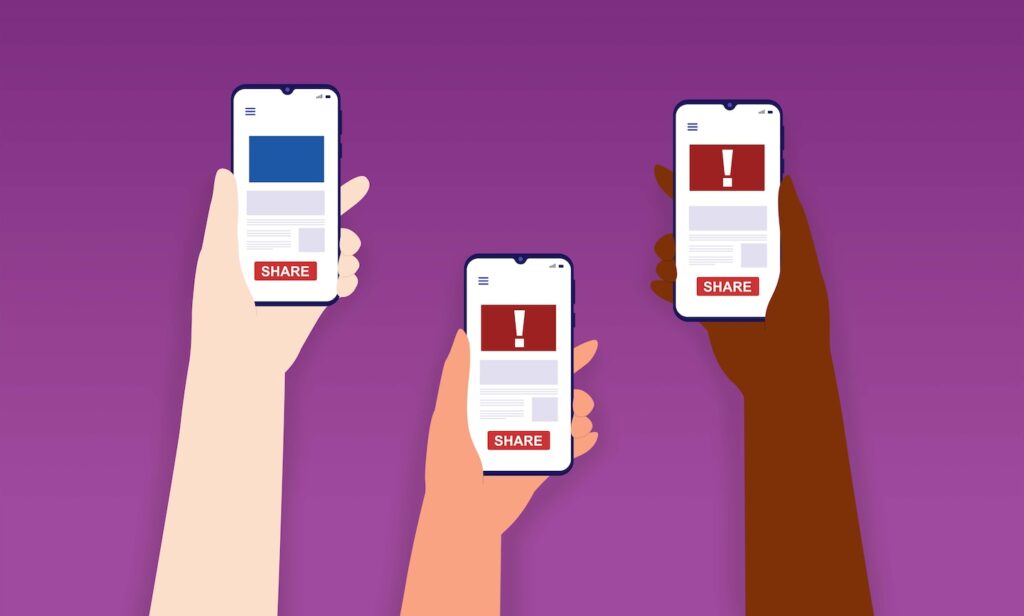
How do you know what to trust, what not to share and what to flag to tech companies? Here are some basic tools everyone should use when consuming breaking news online.
Know what to look out for
Think about who would benefit from spreading confusing information during a news event, and brush up on specific narratives going around. During the midterm elections, for example, experts say to look out for conflicting information and baseless accusations about poll watchers and poll workers and unfounded concerns about voter fraud. After election night, be on alert for premature declarations of victory and misinformation about vote counting. Learn more about exactly what election misinformation is expected in our Technology 202 newsletter.
Do not hit that share button. Social media is built for things to go viral, for users to quickly retweet before they’re even done reading the words they’re amplifying. No matter how devastating, enlightening or enraging a TikTok, tweet or YouTube video is, you must wait before passing it on to your own network. Assume everything is suspect until you confirm its authenticity.
Look at who is sharing the information. If it’s from friends or family members, don’t trust the posts unless they are personally on the ground or a confirmed expert. If it’s a stranger or organization, remember that a verified check mark or being well-known does not make an account trustworthy. There are plenty of political pundits and big-name internet characters who are posting inaccurate information right now, and it’s on you to approach each post with skepticism.
If the account posting is not the source of the words or images, investigate where it came from by digging back to find the original Facebook, YouTube or Twitter account that first shared it. If you can’t determine the origin of something, that’s a red flag. Be wary of screenshots, which can be even harder to trace back, or anything that elicits an especially strong emotional reaction. Disinformation can prey on that type of response to spread.
When screening individual accounts, look at the date it was created, which should be listed in the profile. Be wary of anything extremely new (say, it started in the past few months) or with very few followers. For a website, you can see what year it was started on Google. Search for the name of the site, then click on the three vertical dots next to the URL in the results to see what date it was first indexed by the search engine. Again, avoid anything too new. And don’t skip the basics: Do a Google search for the person or organization’s name.
Make a collection of trusted sources
Doing mini background checks on every random Twitter account is extremely time-consuming, especially with new content coming from so many places simultaneously. Instead, trust the professionals. Legitimate mainstream news organizations are built to vet these things for you, and often do report on the same videos or photos taken by real people after they’ve confirmed their origin.
Use a dedicated news tool such as Apple News, Google News or Yahoo News, which choose established sources and have some built-in moderation. On social media, make or find lists of vetted experts and outlets to follow specifically for news about the topic you’re following. If you consume breaking news on Twitter, be especially careful to follow confirmed reporters from trusted outlets who are on the ground. New changes coming to Twitter’s verification system could make this more difficult.
Many news events will include information from the ground, like smartphone videos and first-person narratives. Even if you see only real posts, it can still be confusing or misleading. Try to augment any one-off clips or stories with broader context about what is happening. They may be the most compelling pieces of a puzzle, but they are not the whole picture. Mix in information from established experts on the topic, whether it’s foreign policy, cyberwarfare, history or politics. You can also turn to online or television outlets that add this context for most stories.
If you’re interested in doing deeper dives into unverified reports, start with this extensive guide on how to screen videos. Look for multiple edits and odd cuts, listen closely to the audio and run it through a third-party tool such as InVid, which helps check the authenticity of videos. This can be harder on live-streamed videos, like what’s on Twitch or any other live social media option.
To check images, put them into Google’s image search by grabbing a screenshot and dragging it to the search field. If it’s an old image that’s circulated before, you may see telling results.
Use fact-checking sites and tools
Social media sites do have some of their own fact-checking tools and warning labels, and many have added special sections to promote official election results. However, given the sheer volume of posts they’re dealing with, a problematic video or post can still be seen by millions before ever getting flagged.
Keep an eye out for content warnings on social media sites for individual posts, which can appear as labels below links or as warnings before you post something that could be misleading. Look up individual stories or images on fact-checking sites such as The Washington Post’s Fact Checker, Snopes and PolitiFact.
Geoffrey A. Fowler contributed to this report.

